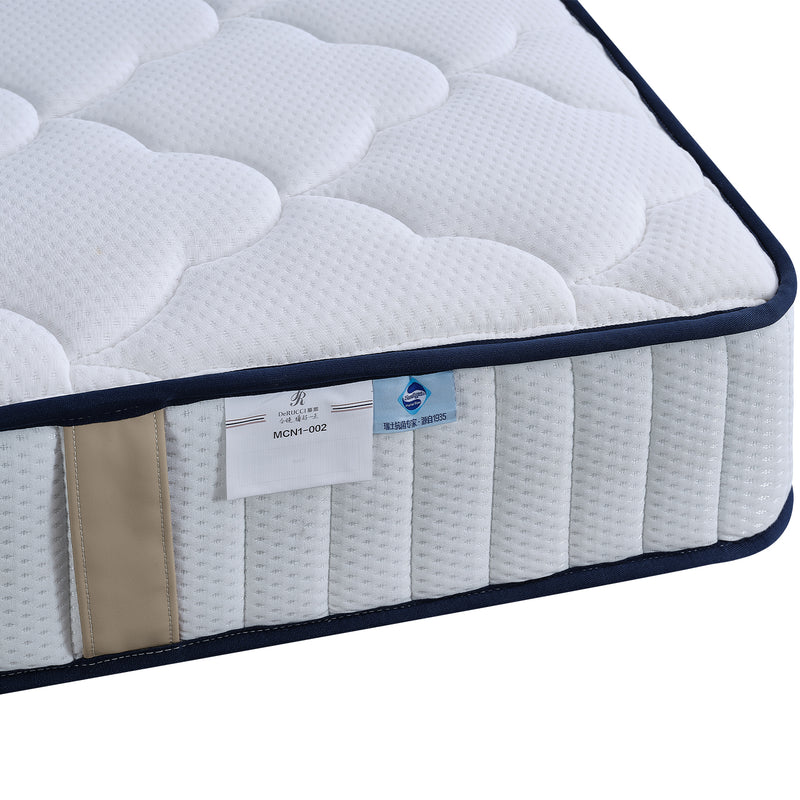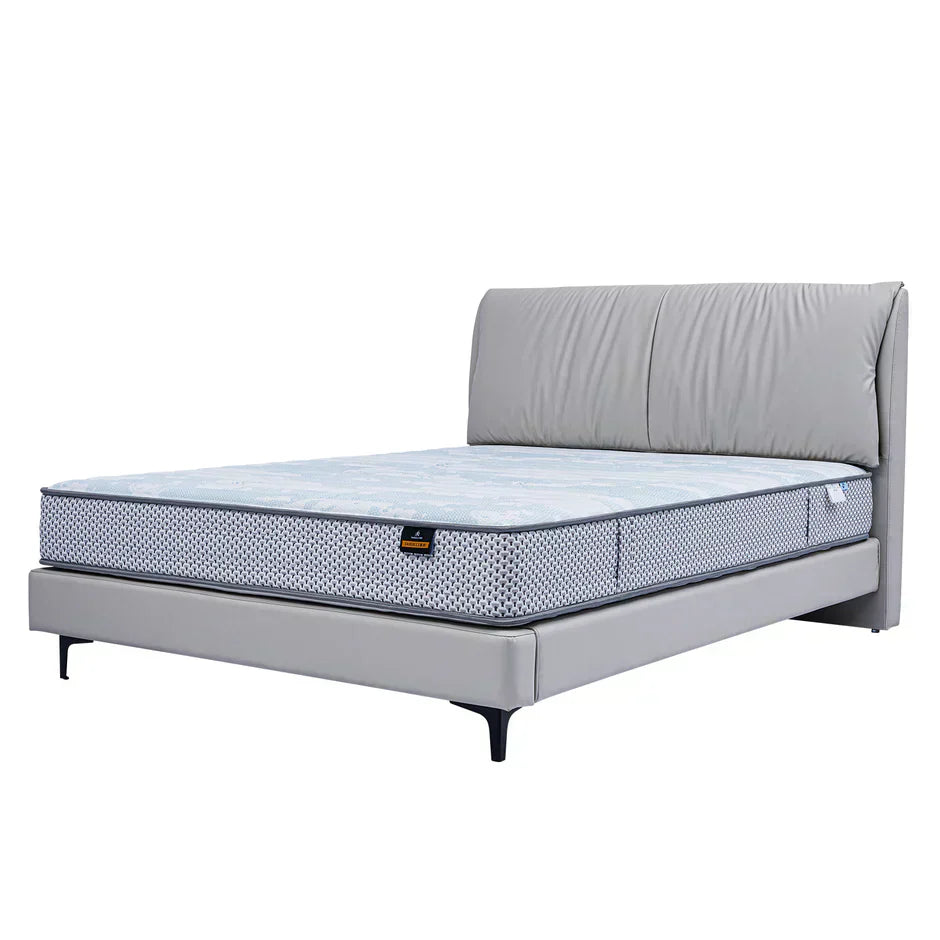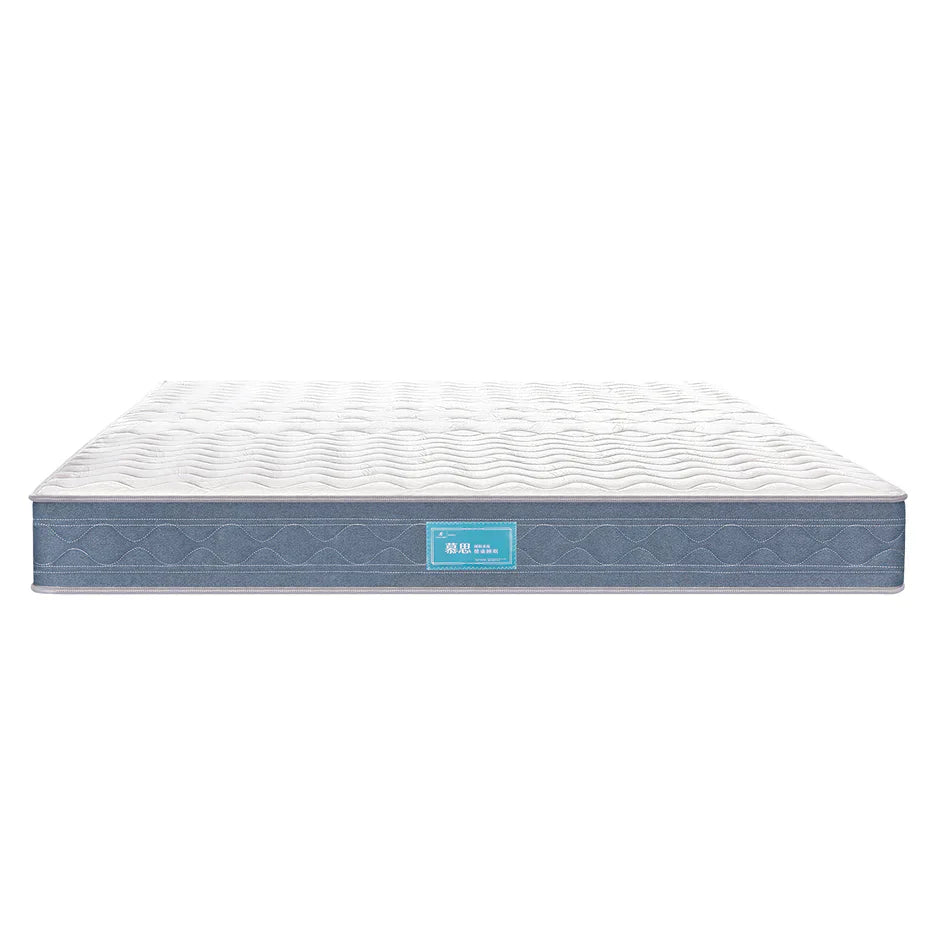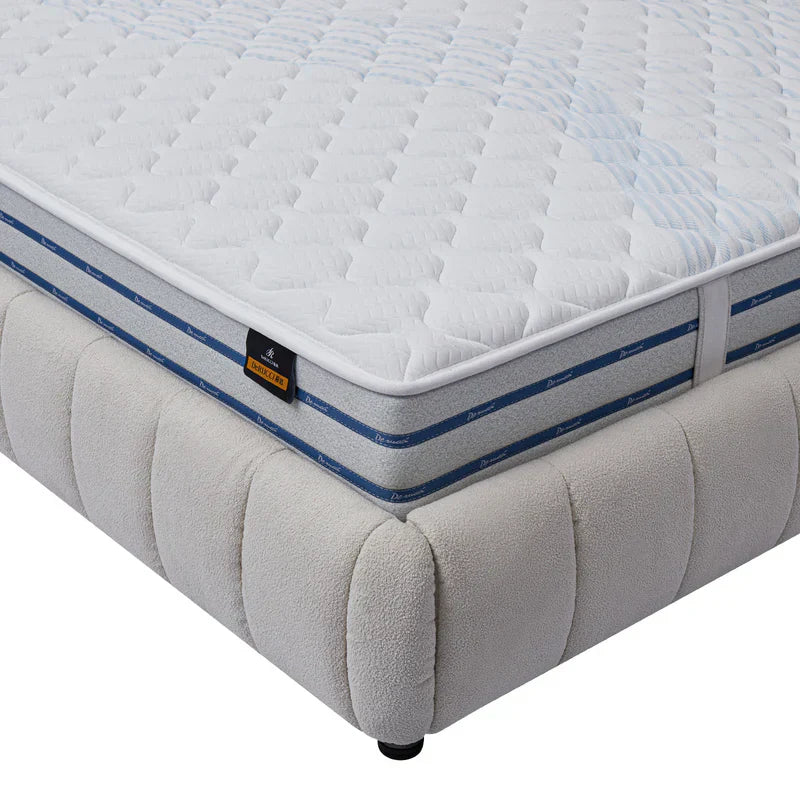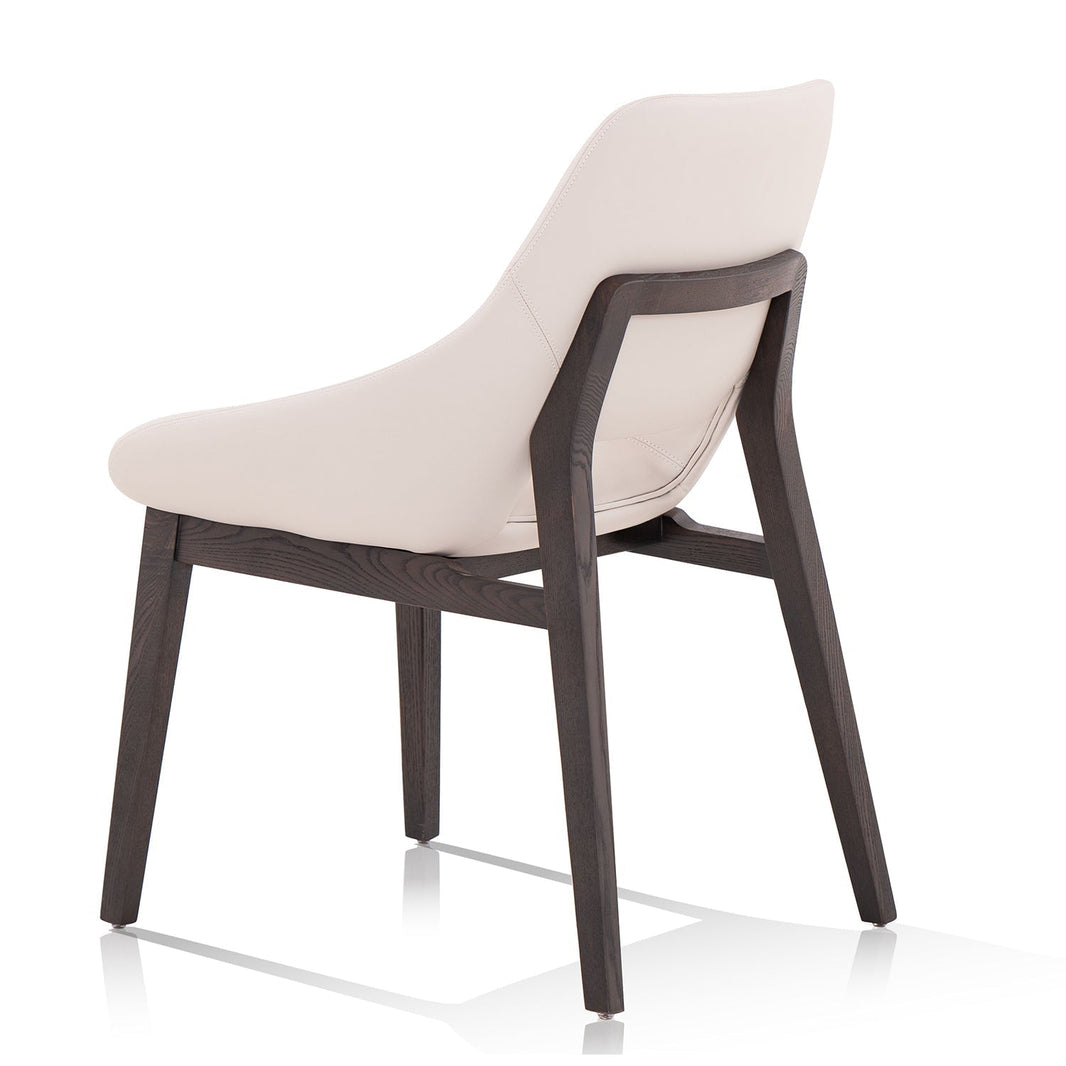Stuck between latex and memory foam mattresses? You're not alone—it's one of the biggest decisions when mattress shopping, and both options have their devoted fans. We'll help you cut through the confusion and find your perfect match, whether you're a hot sleeper who needs maximum breathability, someone looking for long-term value, or a couple wanting peaceful, undisturbed sleep.
Memory Foam vs. Latex: A Side-by-Side Comparison
| Feature | Memory Foam Mattress | Latex Mattress |
| Material | Made from synthetic foam that reacts to heat and pressure. | Crafted from natural latex or synthetic blends derived from rubber tree sap. |
| Comfort | Offers a body-hugging feel, contouring to your shape for pressure relief. | Provides a responsive, slightly bouncy feel with gentle contouring. |
| Durability | Typically lasts 6-10 years, depending on quality. | Known for exceptional durability, lasting 10-15 years or more. |
| Temperature Regulation | Can retain heat, though gel-infused options improve cooling. | Naturally breathable, keeping you cool throughout the night. |
| Motion Isolation | Excellent at absorbing movement, ideal for couples. | Good motion isolation but slightly less effective than memory foam. |
| Eco-Friendliness | Made from synthetic materials, not biodegradable. | Natural latex options are eco-friendly and biodegradable. |
| Price | Generally more affordable, with options for every budget. | Higher upfront cost but offers long-term value. |
| Weight | Lightweight and easy to move. | Heavier and harder to transport. |
| Allergy Concerns | Hypoallergenic but may off-gas chemical odors initially. | Hypoallergenic but may trigger latex allergies in sensitive individuals. |
Tip: If you’re looking for a mattress that hugs your body and isolates motion, memory foam might be your best bet. But if you want something durable, breathable, and eco-friendly, latex could be the way to go.
What is a Memory Foam Mattress?
Memory foam is a synthetic material originally developed by NASA to improve seat cushioning and crash protection. It's made from polyurethane, which gives it its signature softness and support. This foam reacts to your body heat and pressure, molding to your shape for a personalized sleeping experience.
Types of Memory Foam
- Traditional memory foam: Traditional memory foam is temperature-sensitive. It melts down with heat and provides excellent body contouring and pressure relief.
- Gel-infused memory foam: Gel-infused memory foam incorporates cooling gel beads to address heat retention. The beads absorb the heat and help to dissipate it, making the sleeping surface cooler.
- Open-cell memory foam: Open-cell memory foam has an interior makeup consisting of small air pockets. These pockets increase airflow, making the mattress well-ventilated.
Pros of Memory Foam Mattresses
✓ Molds to your body's shape to relieve pressure points and align your spine.
✓ Absorbs movement completely, making it ideal for couples sharing a bed.
✓ Offers quality options at affordable prices, typically starting around $500.
Cons of Memory Foam Mattresses
✗ Traps body heat and can make you sleep uncomfortably warm at night.
✗ Releases chemical odors (off-gassing) when new that may last several days.
✗ Tends to sag and lose shape after 6-10 years of regular use.
What is a Latex Mattress?
Latex is a natural material extracted from the sap of rubber trees. This sap undergoes processing to create latex foam, which is widely used in mattresses. Its elasticity enables it to mold around your body while offering support, which is why it is preferred for comfort and durability.
Types of Latex Mattresses
- Dunlop latex: Dunlop latex is denser and thus firmer—a real catch for those who enjoy supportive mattresses. It is manufactured in a simpler, thus energy-efficient way, which can make it cheaper, too.
- Talalay latex: Talalay latex is softer, more contouring, and plush. Because the process of making Talalay is more complicated, the material features lightness and breathability.
- Natural latex: Natural latex mattresses are fully made from the sap of the rubber tree. It is durable, friendly to the environment, and resistant to allergy, dust mites, and mold.
- Synthetic latex: Synthetic latex is produced from certain petroleum-based materials. Much cheaper, it cannot compete in durability or eco-friendliness with natural latex.
- Blended latex: Blended latex combines natural and synthetic latex. This option balances affordability with some of the benefits of natural latex, such as durability and responsiveness.
Pros of Latex Mattresses
✓ Naturally keeps you cool at night by allowing air to flow through the material.
✓ Lasts up to 15 years while maintaining its shape and support.
✓ Made from sustainable materials that are biodegradable and resistant to allergens.
Cons of Latex Mattresses
✗ Costs significantly more upfront than other mattress types, often starting at $1,500.
✗ Heavy weight makes it difficult to move or rotate without help.
✗ May trigger allergic reactions in people sensitive to latex.
Latex vs Memory Foam: 6 Key Differences
1. Memory Foam and Latex Feel Completely Different
Memory foam creates a slow-sinking, body-hugging sensation that makes you feel cradled. Latex responds quickly to movement and feels bouncy, keeping you more "on top" of the mattress rather than sinking in.
2. You Can Find Different Firmness Levels in Both Types
Memory foam typically comes in soft to medium-firm options, while latex offers the full range from very soft to extra firm. Most people prefer medium-firm (6/10), with side sleepers needing slightly softer (5-6/10) and back sleepers preferring slightly firmer (6-7/10).
| Sleeping Position | Recommended Firmness Level | Firmness Scale (1-10) |
| Side Sleepers | Medium to Medium Firm | 5-6 |
| Back Sleepers | Medium Firm to Slightly Firm | 6-7 |
| General Preference | Medium Firm | 6 |
If you’re a combination sleeper or want more customization, latex mattresses might offer the flexibility you need.
3. Latex Lasts Much Longer Than Memory Foam
Memory foam typically serves you well for 6-10 years before showing signs of wear, such as body impressions. Latex is much more durable and often lasts 10-15 years before losing shape and support.
4. Latex Sleeps Cooler Than Memory Foam
Memory foam can retain much of your body's heat, despite additional cooling features. Latex naturally breathes to keep you cool throughout the night.
5. Memory Foam Is Better at Reducing Motion Transfer
If you share your bed, memory foam is great at absorbing movement so you won't feel when your partner moves around. Latex does reduce some motion transfer but the natural bounce means you might still feel some movement.
6. Memory Foam Costs Less Than Latex
You can get quality memory foam mattresses starting around $500, so they're really budget-friendly. Latex mattresses start higher—usually $1,500 or more—listing their premium materials and longer life.
Who Should Choose a Memory Foam Mattress?
- Side Sleepers: The contouring properties in memory foam are just what side sleepers need. It cushions the pressure points on the shoulders and hips while supporting the spine. Do you wake up feeling achy or sore? Body-hugging support from memory foam may be the thing that changes all that.
- Couples: Memory foam is excellent for motion isolation, which makes it ideal for couples, especially if your partner is restless. Unlike bouncy latex, memory foam absorbs movement, so you won't feel when your partner does midnight shifts or trips to the bathroom.
- Light to Average Weight Sleepers: Those weighing below 200 pounds will find ideal support and pressure relief in memory foam. The material responds well to lighter body weights, offering comfortable contouring without excessive sinkage.
Who Should Choose a Latex Mattress?
- Hot Sleepers: Latex sleeps cool naturally because of its aerated structure. If you tend to overheat in bed at night, latex's better airflow and temperature regulation can help you stay cool while you sleep.
- Heavy Sleepers: Latex is very good for heavier individuals because it is durable and offers firm support. It holds up well over time, distributes weight evenly, and allows for proper spinal support. The natural cooling properties are a definite plus for those who sleep warm.
Choose Your Perfect Mattress Today—Memory Foam or Latex?
If you're looking for affordable comfort and great motion isolation for couples, memory foam is your go-to option. But if you want a long-lasting, eco-friendly mattress that stays cool and offers superior support, latex is worth the extra investment. Don't let another restless night pass—find your perfect match today!
Frequently Asked Questions About Memory Foam and Latex Mattresses
Q1: Which one helps more with back pain—memory foam or latex?
Both mattresses are good at supporting back pain, though they do so in various ways. While memory foam hugs your body, relieving pressure points, latex does the job by providing firmer, bouncier support for spine alignment. For those suffering from chronic back pains, latex mattress usually does more good than harm in the long run.
Q2: Which one is better for keeping my spine healthy?
Latex generally provides better spine support because it maintains natural alignment without excessive sinking. Its responsive surface makes position changes easier while delivering consistent support across the entire mattress surface.
Q3: Which mattress keeps the bed bugs and dust mites away better?
Latex naturally tends to have better resistance to pests because it naturally contains high density and antimicrobial properties. Memory foam can be treated with chemicals to repel them, but not the same natural ones as latex.
Q4: If I have an adjustable bed, which material works better?
Both work well with adjustable beds, though flex differently: memory foam mattress tends to bend more, while latex mattress is a bit more rigid but still accommodates position changes well without sustaining damage.
Q5: Is it worth spending extra on a hybrid mattress that uses both materials?
Usually yes, because you get:
- Benefits from both materials
- Better temperature control
- Longer-lasting mattress
- More comfortable sleep
While pricier upfront, hybrids often give you more value over time.


